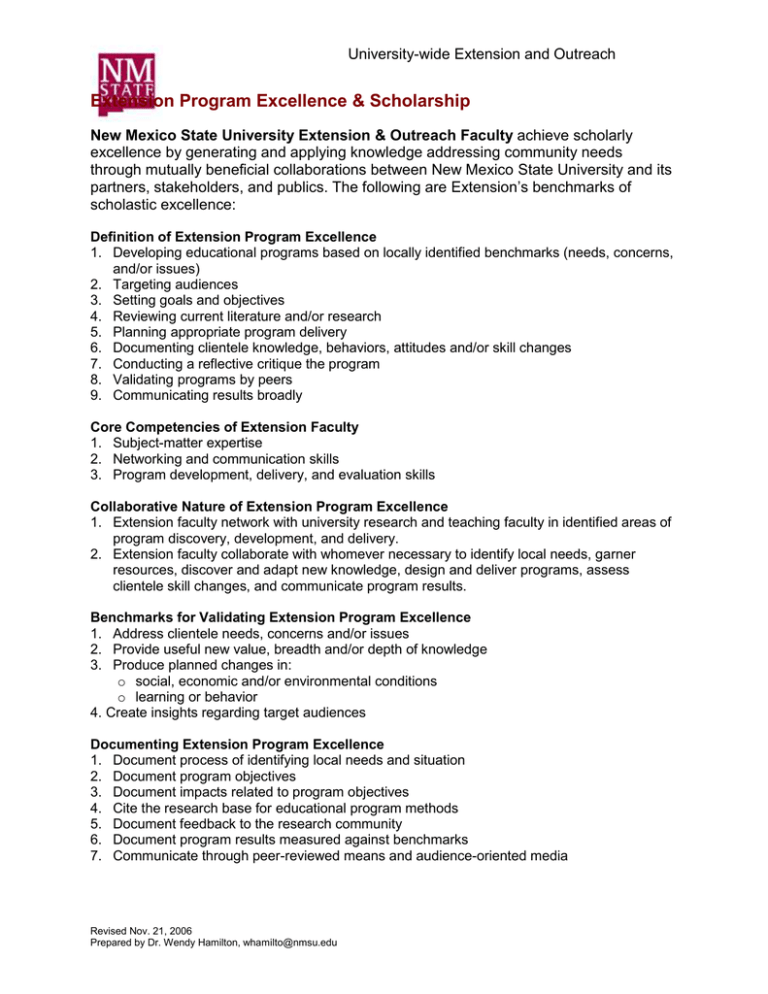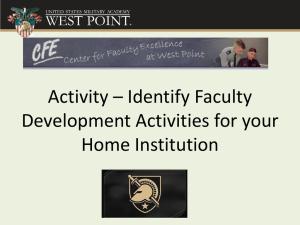Extension Program Excellence & Scholarship
advertisement

University-wide Extension and Outreach Extension Program Excellence & Scholarship New Mexico State University Extension & Outreach Faculty achieve scholarly excellence by generating and applying knowledge addressing community needs through mutually beneficial collaborations between New Mexico State University and its partners, stakeholders, and publics. The following are Extension’s benchmarks of scholastic excellence: Definition of Extension Program Excellence 1. Developing educational programs based on locally identified benchmarks (needs, concerns, and/or issues) 2. Targeting audiences 3. Setting goals and objectives 4. Reviewing current literature and/or research 5. Planning appropriate program delivery 6. Documenting clientele knowledge, behaviors, attitudes and/or skill changes 7. Conducting a reflective critique the program 8. Validating programs by peers 9. Communicating results broadly Core Competencies of Extension Faculty 1. Subject-matter expertise 2. Networking and communication skills 3. Program development, delivery, and evaluation skills Collaborative Nature of Extension Program Excellence 1. Extension faculty network with university research and teaching faculty in identified areas of program discovery, development, and delivery. 2. Extension faculty collaborate with whomever necessary to identify local needs, garner resources, discover and adapt new knowledge, design and deliver programs, assess clientele skill changes, and communicate program results. Benchmarks for Validating Extension Program Excellence 1. Address clientele needs, concerns and/or issues 2. Provide useful new value, breadth and/or depth of knowledge 3. Produce planned changes in: o social, economic and/or environmental conditions o learning or behavior 4. Create insights regarding target audiences Documenting Extension Program Excellence 1. Document process of identifying local needs and situation 2. Document program objectives 3. Document impacts related to program objectives 4. Cite the research base for educational program methods 5. Document feedback to the research community 6. Document program results measured against benchmarks 7. Communicate through peer-reviewed means and audience-oriented media Revised Nov. 21, 2006 Prepared by Dr. Wendy Hamilton, whamilto@nmsu.edu
